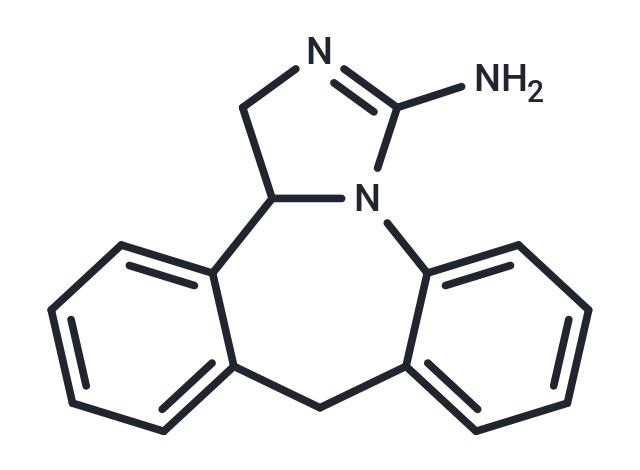Shopping Cart
- Remove All
 Your shopping cart is currently empty
Your shopping cart is currently empty

Epinastine (WAL801), a potent, selective, and orally-active antihistamine and mast cell stabilizer, functions as a histamine H1 receptor antagonist. It also inhibits IL-8 release from human eosinophils, showcasing antiallergic action [1] [2] [3] [4].

| Pack Size | Price | Availability | Quantity |
|---|---|---|---|
| 5 mg | $30 | 1-2 weeks |
| Description | Epinastine (WAL801), a potent, selective, and orally-active antihistamine and mast cell stabilizer, functions as a histamine H1 receptor antagonist. It also inhibits IL-8 release from human eosinophils, showcasing antiallergic action [1] [2] [3] [4]. |
| In vitro | Epinastine effectively displaces [3 H]NC-5Z binding in locust nervous tissue at low concentrations and demonstrates a strong affinity for the neuronal octopamine receptor in honey bees, with a Ki of 1.1 nM. It counters the effects of octopamine-induced cAMP formation in insect brains and inhibits histamine release in rat peritoneal mast cells triggered by antigen-antibody reactions and compound 48/80. This inhibition extends to rat mesenterial pieces and involves curtailing both calcium uptake in guinea pig lung mast cells and calcium release from rat peritoneal mast cell's intracellular stores, induced by compound 48/80 and substance P. Moreover, Epinastine exerts a dose- and time-dependent reduction in IL-8 release from eosinophils derived from subjects with atopic diseases, showcasing its broad biological impact across various species and cellular processes. |
| In vivo | In receptor binding studies, Epinastine demonstrates high affinity for H1-receptors in the guinea pig ileum and effectively inhibits histamine-induced reactions in the skin and lungs of rats, dogs, and guinea pigs [1]. |
| Molecular Weight | 249.31 |
| Formula | C16H15N3 |
| Cas No. | 80012-43-7 |
| Storage | Powder: -20°C for 3 years | In solvent: -80°C for 1 year | Shipping with blue ice. |

Copyright © 2015-2025 TargetMol Chemicals Inc. All Rights Reserved.